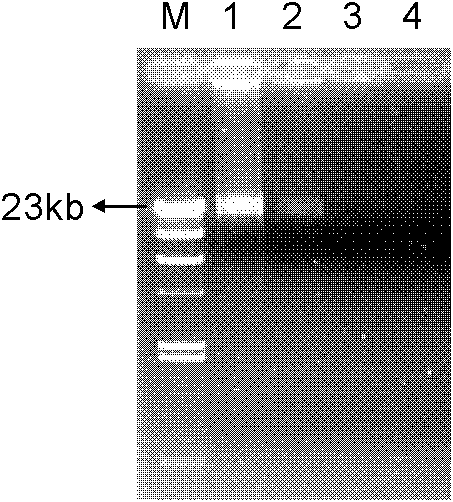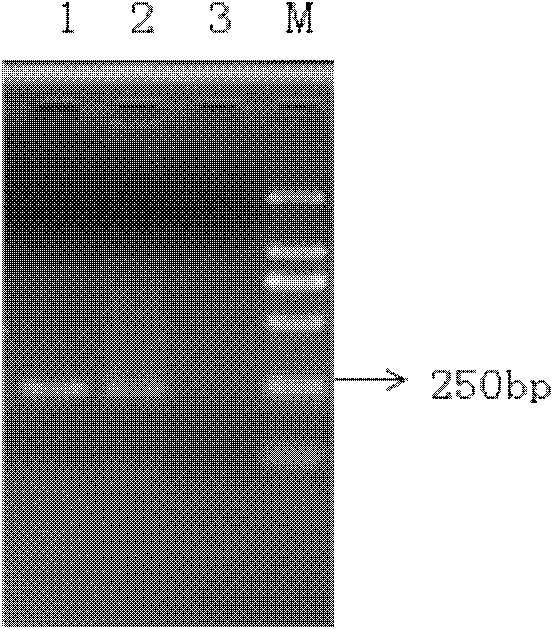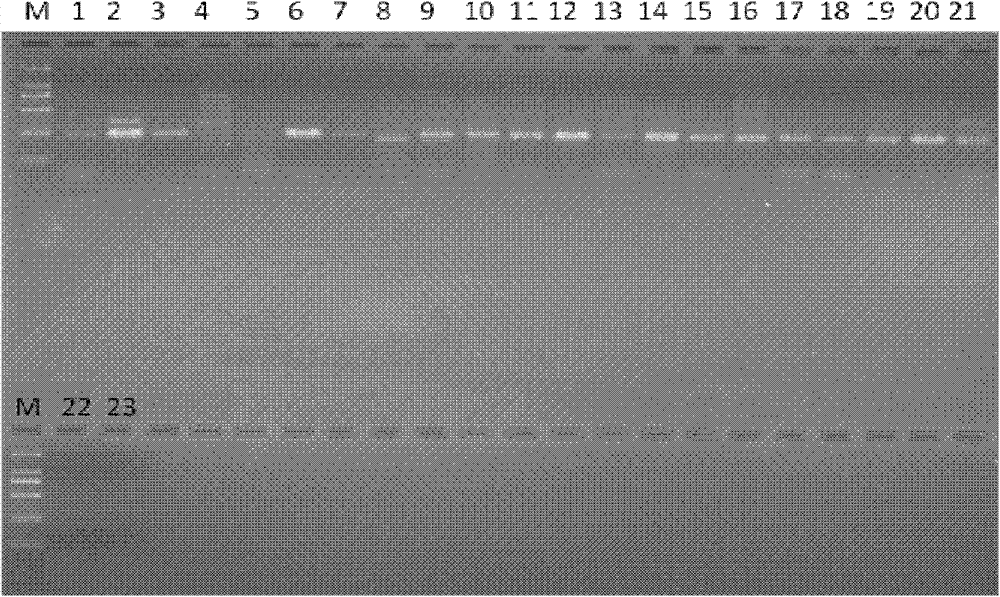Method for detecting mycobacterium tuberculosis and special-purpose primers therefor
A technology of Mycobacterium tuberculosis and primer pair, applied in the biological field, can solve problems such as poor specificity, and achieve the effects of high accuracy, high sensitivity and short time consumption
- Summary
- Abstract
- Description
- Claims
- Application Information
AI Technical Summary
Problems solved by technology
Method used
Image
Examples
Embodiment 1
[0051] Embodiment 1, the acquisition of Mycobacterium tuberculosis specific primer
[0052] IS6110 is a unique insertion sequence of Mycobacterium tuberculosis complex, and the number of copies of this insertion sequence in the genome is 1-20. Selecting the insertion sequence as the detection target sequence of Mycobacterium tuberculosis can obtain higher sensitivity and specificity .
[0053]Using Primer V5.0 to design primers with IS6110 as the target sequence, the sequence is as follows:
[0054]
Embodiment 2
[0055] Embodiment 2, detect Mycobacterium tuberculosis
[0056] 1. Template preparation
[0057] Extraction of Mycobacterium tuberculosis H37Rv (Zhang Yuanyuan, Zhang Xuanmin, Zhao Xiuqin, Zeng Lingcheng, Liu Zhiguang, Wang Xilin, Wang Yan, Du Xinling, Han Yueling, Wan Kanglin. Establishment and evaluation of a PCR technique for direct detection of tuberculosis sputum specimens. Chinese Communist Party of Animals Disease Journal, 2008, 24 (11): 1017-1021. The public can obtain from the Institute of Microbiology, Chinese Academy of Sciences.) DNA as a template, carry out gradient dilution, get concentration respectively and be 300fg / μl and 30fg / μl and carry out following as template reaction.
[0058] 2. MDA-PCR two-step reaction procedure
[0059] 1) MDA reaction
[0060] The nucleotide sequence of the MDA random primer is 5'-NNNNNN-3', and a sulfur-phosphorus bond is formed between the 1st and 2nd nucleotides at the 3' end, and a sulfur-phosphorus bond is formed between th...
Embodiment 3
[0073] Embodiment 3, the sensitivity analysis of detection method
[0074] 1. Preparation of DNA
[0075] ①Take 500 μl of clinical sample sputum (sputum, known to contain Mycobacterium tuberculosis (MTB), provided by the Tuberculosis Laboratory of the Institute of Infectious Disease Control and Prevention, Chinese Center for Disease Control and Prevention, and informed by the patient) into 1.5ml Eppendorf, Centrifuge at 9500×g for 15 minutes, and discard the supernatant.
[0076] ② Add 100 μl of lysate (containing 50mM Tris-HCl, pH 8, 50mM KCl, 2.5mM MgCl 2 , 0.45% Tween 20, 0.45% Nonidet P-40, 10 μg proteinase K).
[0077] ③ After shaking evenly, place in a water bath at 56°C for 3 hours.
[0078] ④ Inactivate proteinase K at 95°C for 10 minutes.
[0079] ⑤ Centrifuge at 9500×g for 5 minutes.
[0080] Transfer the supernatant to a new Eppendorf tube and use it as a DNA template.
[0081] 2. MDA-PCR two-step reaction procedure.
[0082] According to step 2 in Example 2,...
PUM
 Login to View More
Login to View More Abstract
Description
Claims
Application Information
 Login to View More
Login to View More - R&D
- Intellectual Property
- Life Sciences
- Materials
- Tech Scout
- Unparalleled Data Quality
- Higher Quality Content
- 60% Fewer Hallucinations
Browse by: Latest US Patents, China's latest patents, Technical Efficacy Thesaurus, Application Domain, Technology Topic, Popular Technical Reports.
© 2025 PatSnap. All rights reserved.Legal|Privacy policy|Modern Slavery Act Transparency Statement|Sitemap|About US| Contact US: help@patsnap.com



